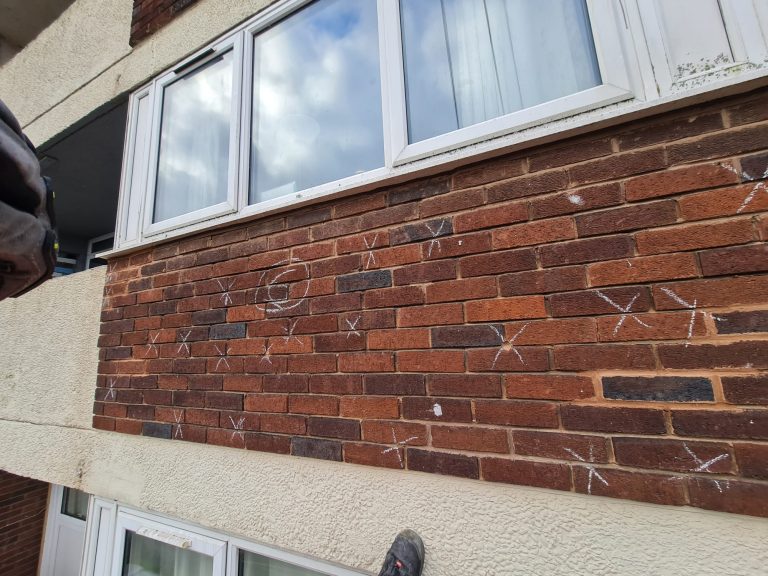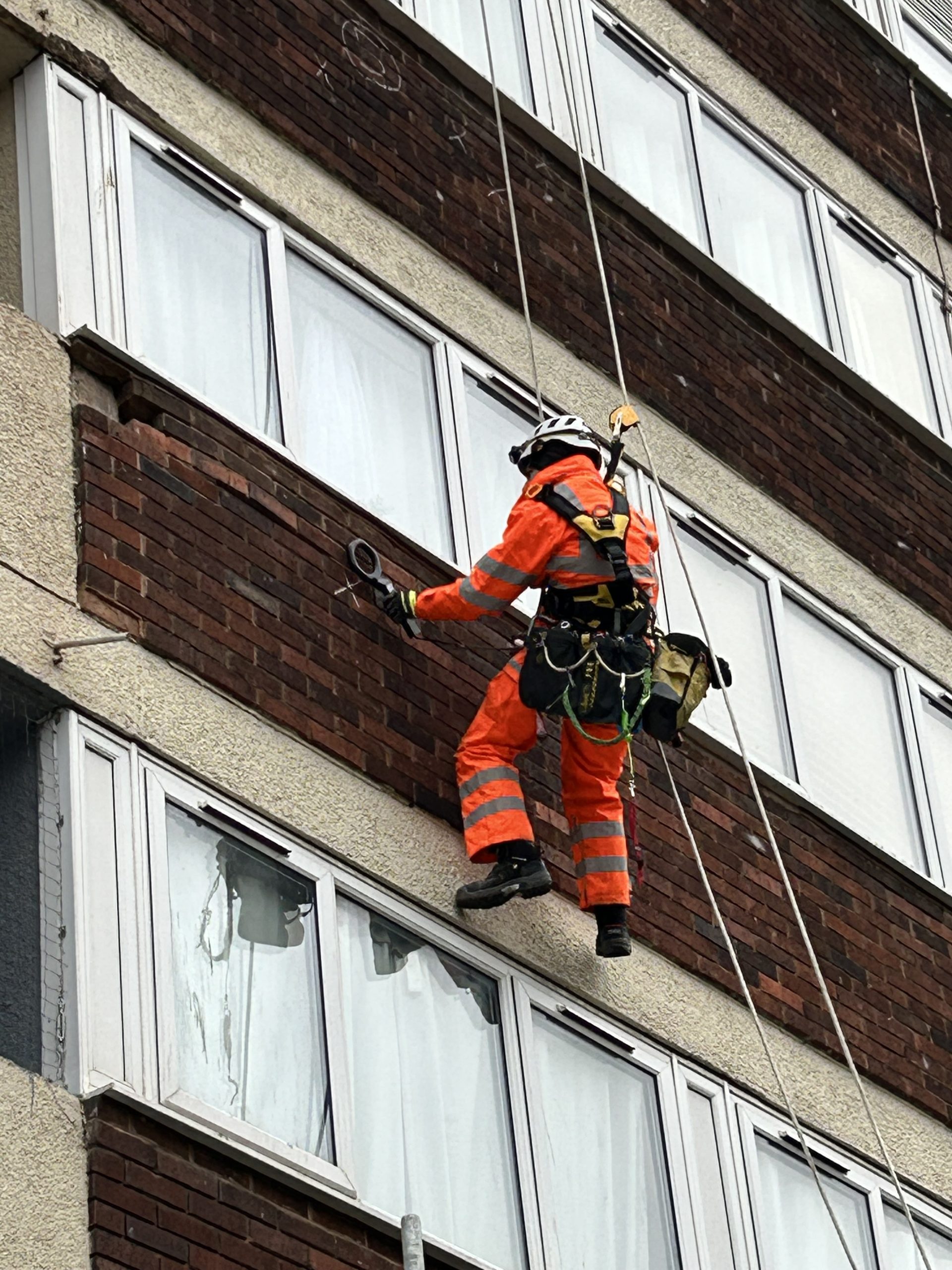We have just completed a Wall Tie Survey to a residential High-Rise Building in Halesowen, Birmingham using our Specialist Rope Access Surveyors.
We recently carried out a routine Defect and Safety Survey on the building and found some of the coursework had either dislodged or was dangerously bowing outwards on the front elevation.
After reporting the defect to the Structural Engineer that oversees the Local Authority buildings, it was agreed that a Wall Tie Survey be carried out to find out the reasoning behind the defective brickwork.
Our Specialist Rope Access Surveyors carried out a full wall tie count across the offending elevation using hand held metal detectors to locate the ties. After the ties were located they were referenced by floor and abseil drop and marked with chalk for further investigations to be carried out.
Once the population count was completed, it was decided that four intrusive brick removals were to be undertaken to record brick sizing, cavity depth, insulation, second row type (brick or block) mortar embedment and of course, type of wall tie. The wall tie and a mortar dust samples were removed for laboratory analysis.
All bricks were remediated and a final report forwarded to the client for review.
How can you tell if your building requires a Wall Tie Survey?
Common wall tie failure indicators include:
- Horizontal cracking
- Out of plumb, bowed, cracked or collapsed brickwork elevations.
- Rust staining on the walls
- Problems having been identified within properties of a similar age and location.
If we can be of any assistance to carry out a wall tie survey using our Specialist Rope Access Surveyors, then please don’t hesitate to get in touch.


